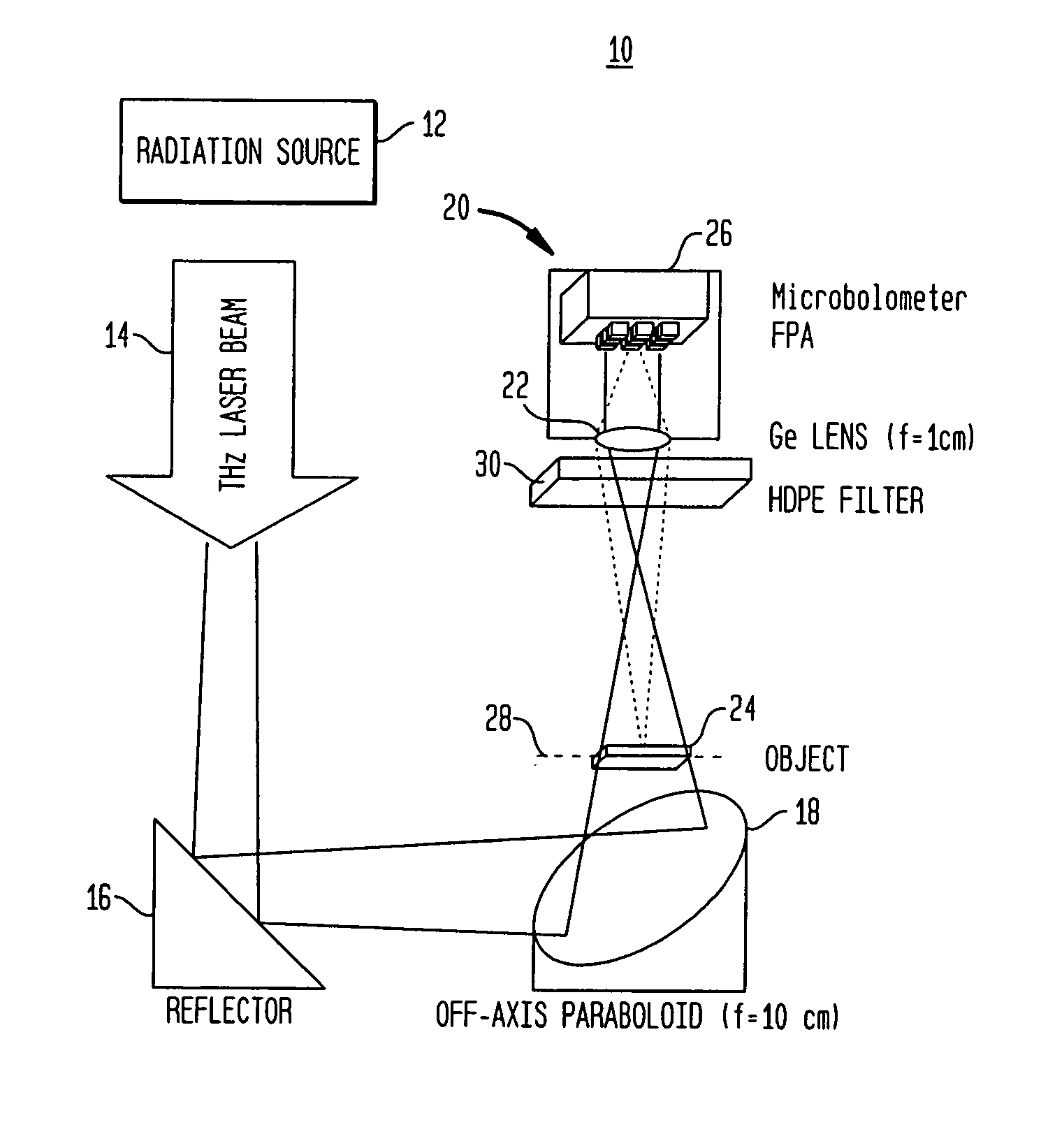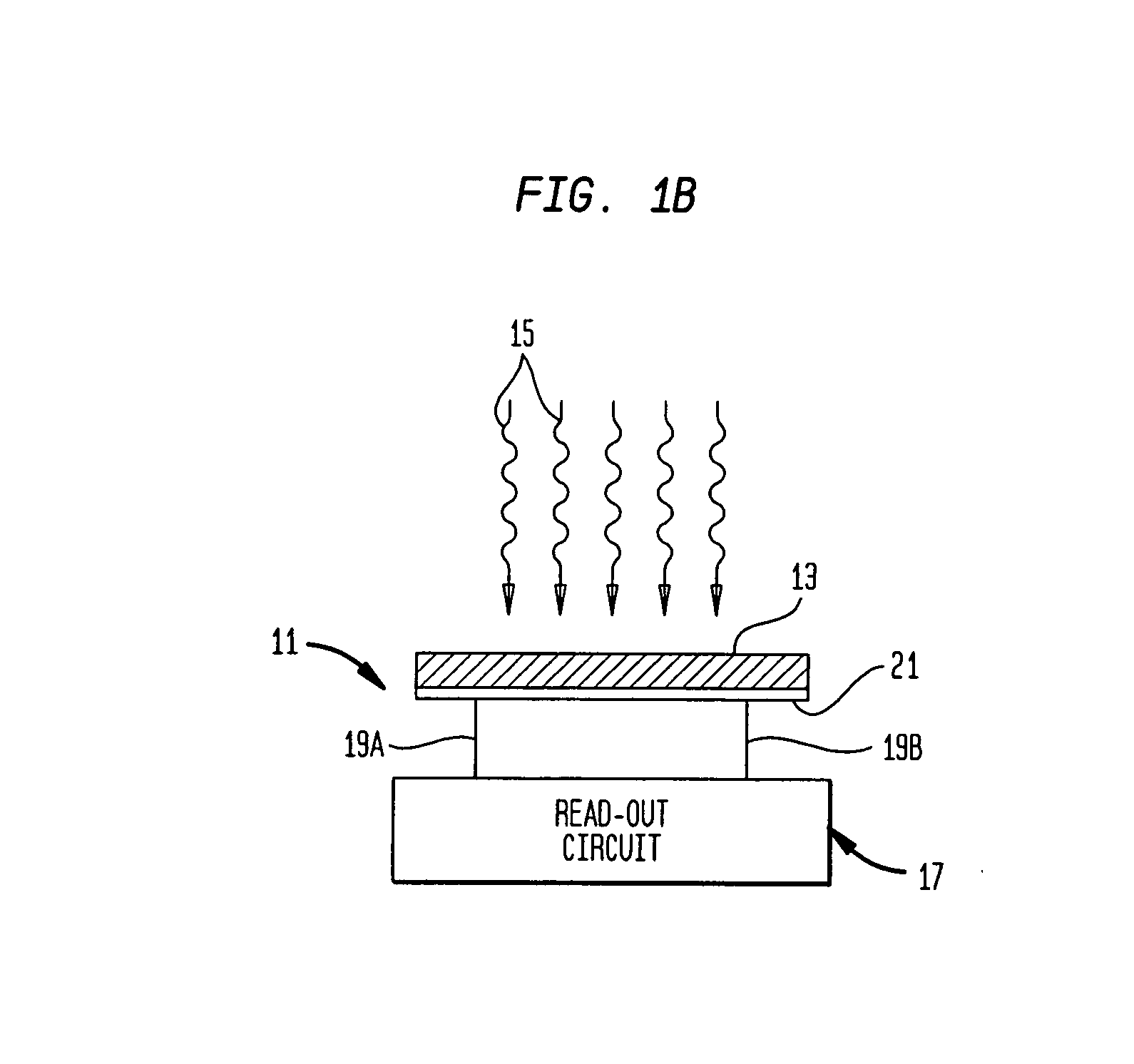Real-time, continuous-wave terahertz imaging using a microbolometer focal-plane array
a microbolometer and focal-plane array technology, applied in the field of terahertz (thz) imaging systems, can solve the problems of limiting the image acquisition time to the mechanical scan rate of the system, requiring minutes to acquire the complete image, and adding to system complexity, so as to reduce the effect of ambient infrared radiation
- Summary
- Abstract
- Description
- Claims
- Application Information
AI Technical Summary
Benefits of technology
Problems solved by technology
Method used
Image
Examples
Embodiment Construction
[0033]FIG. 1A schematically illustrates a terahertz imaging system 10 according to an exemplary embodiment of the invention that includes a source 12 for generating radiation having one or more frequency components in a range of about 0.1 terahertz (THz) to about 10 THz (corresponding to a wavelength range of about 30 to about 3000 microns). In many embodiments, quantum cascade lasers (QCLs) are employed for generating the terahertz radiation (e.g., continuous-wave (CW) or pulsed radiation). Some examples of quantum cascade lasers suitable for use in the practice of the present invention as terahertz radiation sources are described in co-pending applications of the assignee of the present application entitled “Terahertz Lasers and Amplifiers Based on Resonant Optical Phonon Scattering to Achieve Population Inversion” (filed on Sep. 12, 2003 and having an application Ser. No. 10 / 661,831) and “Metal Waveguides for Mode Confinement in Terahertz Lasers and Amplifiers” (filed on Sep. 12,...
PUM
| Property | Measurement | Unit |
|---|---|---|
| power | aaaaa | aaaaa |
| power | aaaaa | aaaaa |
| power | aaaaa | aaaaa |
Abstract
Description
Claims
Application Information
 Login to View More
Login to View More - R&D
- Intellectual Property
- Life Sciences
- Materials
- Tech Scout
- Unparalleled Data Quality
- Higher Quality Content
- 60% Fewer Hallucinations
Browse by: Latest US Patents, China's latest patents, Technical Efficacy Thesaurus, Application Domain, Technology Topic, Popular Technical Reports.
© 2025 PatSnap. All rights reserved.Legal|Privacy policy|Modern Slavery Act Transparency Statement|Sitemap|About US| Contact US: help@patsnap.com



